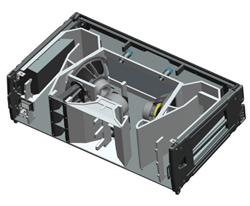
Individual Control
The drive signal for every cell in every cabinet is optimized by MLA DISPLAY2 computer software (DIrect SPL of ArraYs) that offers accurate and consistent results across the audience surfaces, and has a modeling accuracy of plus or minus 1 dB.
The original goal of modern line arrays was to produce a flat isophasic vertical wavefront with all cabinets driven by the same signals.
Subsequent systems tended to be driven in several zones, with increasing level and HF EQ at the top of the array.
MLA provides more even coverage by providing individual control for each cell of the system.
Indeed, Martin Audio pioneered “HF Band Zoning” with the W8L (the precursor to Longbow), typically processing an array in three separate zones to apply EQ appropriate for each audience area to compensate for air absorption at different distances.
Now with MLA, all six of the enclosure “cells” – one low-frequency cell, two mid-range cells and three high-frequency cells – can be processed individually. In a 8-box array, there would be 48 cells, too many to manage manually.
MLA addresses the issue of consistency from one show and venue to the next, and it also addresses the issue of limited set-up time for temporary systems, helping to achieve better results in the same or even less time between rigging and sound check.
This new system also improves upon the limitations of the typical zoned approach by processing individual transducers.
And, it avoids the use of presets, instead relying on the software’s accurate modeling of the loudspeaker system and intended listening area.

